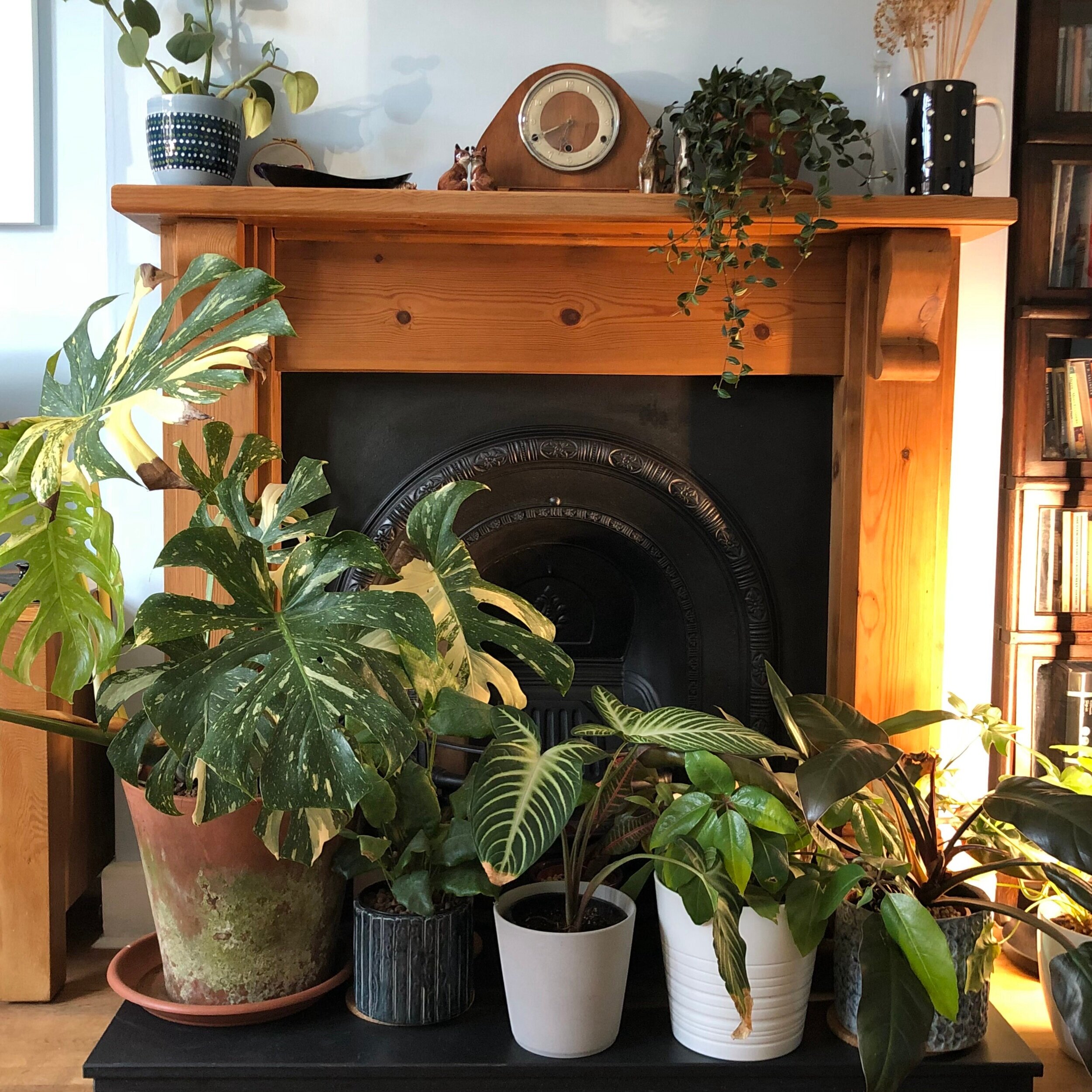Ten ways to make your houseplant addiction more sustainable
Growing houseplants from seed and cuttings can be satisfying and provide plenty of material for swaps. It’s how I’ve obtained some of my best plants. Photograph: Jane Perrone.
Reduce, reuse, recycle: most of my plant pots are secondhand. Photograph: Jane Perrone.
It was inevitable that a backlash against the surge of interest in houseplants would come: there have been a slew of articles recently about “the dark side of the houseplant hobby” including this one in the Telegraph and this from The Atlantic.
In my podcast On The Ledge, I’ve been talking for the past four years about how houseplant growing can be made as sustainable as possible, including using peat-free compost, growing from seed and encouraging plant swaps.
Here’s my checklist to make sure your houseplant hobby is as eco-friendly as possible…
Go peat-free
Digging up peat from peat bogs to turn into a potting medium for plants is terrible for the environment. Peatlands store half a trillion tonnes of carbon, twice as much as the world’s forests: they are valuable ecosystems that should not be destroyed. That’s why I signed this letter to the UK government calling for a complete ban on the sale of peat compost in the UK before the end of 2021.
Houseplants don’t need to grow in peat: all mine grow in peat-free potting medium, even carnivorous plants!
Check out On The Ledge episode 103 for the lowdown on growing houseplants peat-free.Learn to propagate
If you can master the skills of taking cuttings, growing plants from seed, air layering and division, you will gain a far deeper understanding of your plants, and make lots of new plants to share with friends.
Check out more than a dozen On The Ledge episodes that focus on growing from seed and other forms of propagation.
Get into plant swaps
One of the most exciting parts of the houseplant world are swaps - whether that’s in-person meetups (remember those?) or trades conducted by post. No, you won’t start out with a picture-perfect, full plant, but you will learn lots along the way, and have the joy of nurturing your plant as it matures.
Find out more about plant swaps in On The Ledge episode 112.
Buy secondhand
So many of the stuff I’ve bought for my houseplants is secondhand, from the shelves they sit on and the pots they’re in, to my watering cans and glass cloches. Browse charity shops (aka thrift stores), go on Facebook Marketplace, Gumtree and the like, join local Freecycle and Freegle groups, and you’ll soon unearth a treasure trove of stuff that’s cheap or even free. You’ll be keeping stuff out of landfill, finding unique stuff and getting the warm glow of satisfaction that comes from searching out cool stuff.
I talk about the joy of thrifting in On the Ledge episode 179.
Don’t buy into the lie that ‘you can never have too many plants’
Before you make any new plant purchases, think hard about where this new plant fits into your collection, whether you have the time and skills to look after it. Having too many plants flips the switch from plants as an aid to your mental health to plants as a cause of stress. Plus, plants that end up in the bin after a month because you don’t have time for them is the opposite of sustainable growing.
Listen to my On The Ledge episode on plant hoarding here.
Say yes to sustainable pest control
Systemic insecticides should be an absolute last resort when it comes to controlling houseplant pests. That said: don’t assume that because something is “natural” or “organic” that it doesn’t have a potential risk to you, your pets or wildlife either. Biological controls are a great way of dealing with an infestation, but don’t assume you can do one simple thing and solve the problem forever. Most pest problems require constant vigilance and a lot of spraying and wiping leaves.
Listen to On The Ledge episodes on biological controls here and here.
Educate yourself about plant poaching
Do you know where that wizened old cactus you bought on Etsy actually came from? Plant poaching is devastating plant communities in many parts of the world, including South Africa and parts of Southeast Asia. Educate yourself about the signs to look for when buying plants so you don’t fall into the trap of buying wild-collected plants.
Listen to On The Ledge episode 169 on cactus and succulent poaching.
Cut down on plastic
From plant labels to plastic pots, gardening is awash with plastic - much of it is not recyclable. This is starting to change, but it takes a shift in culture for things to really move in the right direction. I do use plastic pots, but they get reused dozens of times: I never buy new plastic pots. I make plant labels out of old yoghurt pots (cut them up with a pair of sharp scissors), and try to buy from sellers who offer plastic-free packaging.
Listen to On The Ledge episode 127 on pots.
Support growers who champion sustainability
The lure of the cheap supermarket houseplant is strong, but it’s vital that we support small scale growers who are investing in sustainable approaches, going peat-free and avoiding plastic packaging.
Check out my houseplant buying guides for the US and the UK (this includes a section on sustainable suppliers).
Support plant societies
If you really want to become an expert on a particular kind of houseplant, plant societies can help you expand your knowledge, meet fellow growers and access seeds and plants of rarer species that haven’t been taken from the wild.
Jane Perrone is the host and producer of On The Ledge podcast and a garden writer. Her forthcoming book Legends of the Leaf is crowdfunding now.

